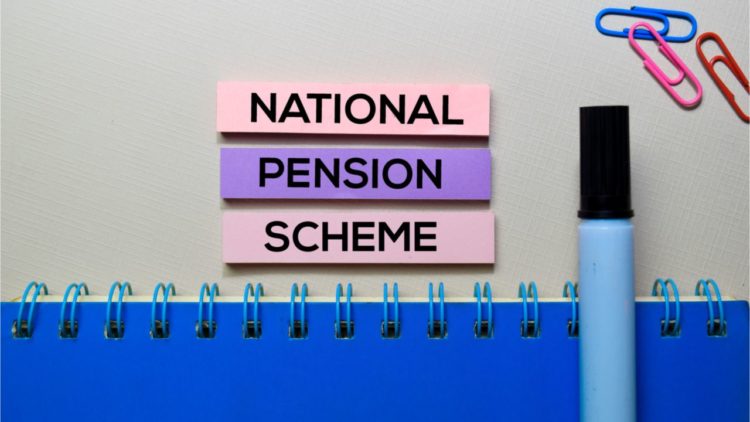
What’s Inside
- History of National Pension System
- The concept of contributory pension scheme
- How does the defined contributory pension scheme work?
- Who is eligible for contributory pension scheme?
- Management of the contributory pension scheme
- Withdrawal from NPS scheme
- FAQ’s
Having a source of income post-retirement is necessary so that you can live a financially independent life. That is why many of you invest in retirement oriented funds when you are working so that when you retire you would have created a retirement corpus for yourself. Salaried employees have the benefit of EPF (Employees’ Provident Fund) contributions which help them create a regular corpus. The general public can invest in PPF (Public Provident Fund) and create a retirement fund. Moreover, the Government also introduced the National Pension System which gives you an additional avenue to save for retirement. Here’s how the scheme was introduced –
History of National Pension System in India
National Pension System was initially launched by the Central Government as a defined contribution oriented pension scheme. The scheme was implemented from 1st January 2004 through a notification titled Ministry of Finance (Department of Economic Affairs) OM Number 5/7/2003 PR dated 22/12/2003. The National Pension System was introduced as a contributory pension scheme. It was applicable to the employees of the Central Government and it allowed them to create a retirement corpus. However, later on in the year 2009, the scheme was opened to the general public as well. Today, even you can invest in the NPS scheme and create a retirement fund for yourself.
The concept of contributory pension scheme in India
Though the National Pension System is available to all types of investors, for employees of the Central Government the scheme is still a contributory pension scheme in India. A contributory pension scheme is one wherein the employee has to contribute a fixed part of his salary towards the investment scheme and the employer also contributes an equal amount to build up a corpus. Under the National Pension System, the Government employees who have joined service on or after 1st January 2004 have to mandatorily contribute 10% of their basic pay plus Dearness Allowance towards the National Pension System. The Government also makes an equal contribution to the contributory pension scheme. The contributions of both the employee and the Government, therefore, help in creating a sound retirement corpus.
How does the defined contributory pension scheme work?
Under the defined contributory pension scheme, 10% of the basic pay and dearness allowance of Government employees is deducted and credited to the National Pension System. The Government also contributes an equal amount. The contributions are credited to the investment account of the National Pension System (NPS). There are two types of NPS accounts which are as follows –
Tier I Account
Tier I Account is the mandatory investment account into which Government employees have to contribute. The Government also contributes towards Tier I Account. This account does not allow partial withdrawals except in specified circumstances. The account matures when the employee attains 60 years of age.
Tier II Account
Investments in Tier-II Account are not mandatory. An employee can invest in Tier-II Account only if he has invested in Tier I Account. The Government does not make any contributions to the Tier II Account. This account allows free withdrawals anytime that you want. You can also redeem the total fund value of this account before reaching 60 years of age.
Who is eligible for contributory pension scheme?
Employees of the Central Government who have joined employment on or after 1st January 2004 are eligible to join the contributory pension scheme of NPS. Employees in the armed forces, however, are exempted from the rule.
Management of the contributory pension scheme
The contributory pension scheme under NPS is managed by various entities which are as follows –
PFRDA
PFRDA stands for Pension Fund Regulatory and Development Authority. PFRDA is the main entity which governs the working of the NPS scheme.
Central Recordkeeping Agencies (CRAs)
CRA is the agency which maintains the records of NPS subscribers, administers the scheme and provides customer care services. The National Securities Depository Limited (NSDL) acts as the CRA of NPS scheme.
Pension Fund Managers (PFM)
PFMs are companies which manage the investment of the pension funds accumulated under the contributory pension scheme. Since NPS is a market-linked investment avenue, PFMs invest the employees’ money in different types of assets which can be fixed-income instruments or equity investments. They give the employees three investment schemes called A, B and C and each scheme has a different asset allocation. The employees can choose their preferred investment scheme depending on their risk profile and the contributed pension is then invested as per the chosen scheme.
Annuity Service Providers (ASPs)
ASPs are insurance companies from which you can avail annuity payments after the NPS investment matures.
Withdrawal from NPS scheme
On maturity
Government employees who mandatorily contribute towards the contributory pension scheme of NPS can exit from the scheme after they attain 60 years of age. At that age, the scheme matures. On maturity, 60% of the accumulated corpus can be received in a lump sum. This lump sum amount would be tax-free and you can decide how to use the amount. However, the remaining 40% of the corpus is mandatorily used to receive annuities. You can choose any of the authorized ASPs to receive annuity payments from 40% of the corpus that you get. These annuities would, however, be considered as an income and would be taxed at your income tax slab rates.
Before maturity
If, on the other hand, a Government employee leaves the scheme before attaining 60 years of age, 80% of the accumulated fund value would be paid in annuities and the remaining 20% can be withdrawn in a lump sum. The lump-sum amount of 20% would be tax-free but the annuities received from 80% of the corpus would be taxed at the applicable income tax rates.
On death or discharge from service
If the Government employee dies or is discharged from Government service, the NPS fund created through the contributory pension scheme can be used to receive benefits either under the NPS scheme or the pension scheme which existed before NPS.
Central Government employees are, therefore, mandatorily covered under the NPS scheme. For them, however, the contributory pension scheme is applicable where they and the Government both contribute a specified portion of the salary towards Tier I Account of the NPS scheme. This account, then, creates a retirement corpus and also promises pension payments after the employee retires from Government service.
FAQ’s
- I am not a Government servant. Would I have to open an NPS account?No, NPS investment is not mandatory for employees who do not work in the Central Government. So, you don’t have to open an NPS account. However, you can choose to do so if you want to create a retirement corpus for yourself.
- Is the Tier II contribution defined?No, defined contribution is only applicable for Tier I. Government employees can invest in Tier-II Account as per their discretion. Such investments are neither mandatory nor defined.
- What are the instances wherein withdrawals from Tier I Account are permitted?Withdrawals from Tier I Account are permitted only for meeting specific costs like marriage related costs, education costs, buying a house, medical costs, unemployment, etc.
- Will the Government contribute to the NPS scheme if I am not a Government employee?No, the Government’s defined contribution is available only for the employees of the Government. If you are not an employee, the Government would not contribute towards your NPS account.
Read more:
Found this post informational?
Browse Turtlemint Blogs to read interesting posts related to Health Insurance, Car Insurance, Bike Insurance, and Life Insurance. You can visit Turtlemint to Buy Insurance Online.
? Looking for a Suitable Insurance Plan? Speak to Our Advisor.
Call now: 1800 266 0101 | Mail-us: support@turtlemint.com



